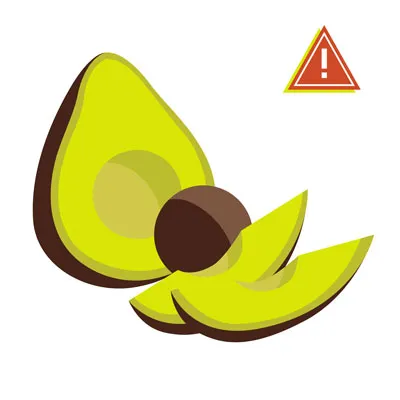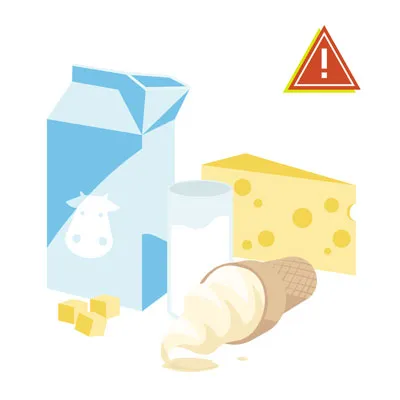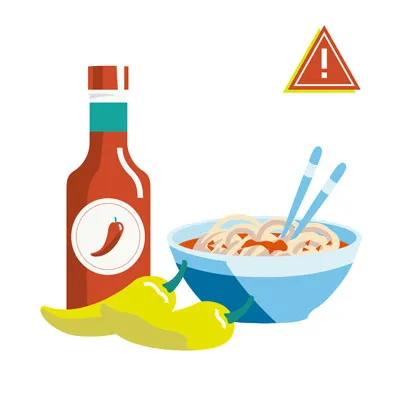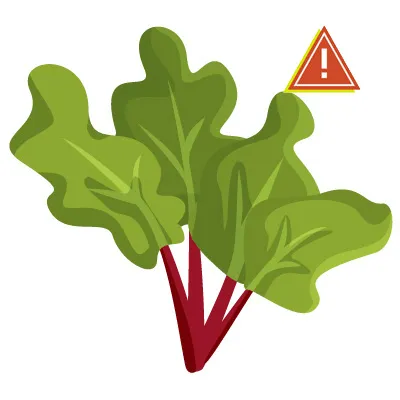For dog owners, understanding what foods dogs can’t eat is crucial for their furry companions’ health and safety. While some human foods offer nutritional benefits, many common household items can be highly toxic, even in small amounts, leading to severe illness or worse. The unfortunate reality is that pet poisonings are a significant concern, with hundreds of thousands occurring annually in the United States alone. Although not all are food-related, everyday foods are a major contributor, making it essential to differentiate between safe and dangerous options for your pet.
This guide serves as your essential “cheat sheet,” providing comprehensive information on foods to avoid and those your dog can safely enjoy, helping you keep your beloved canine companion healthy and happy. Being well-informed can prevent accidental ingestion and the distress that comes with it.
Why Certain Foods Are Toxic to Dogs
Dogs’ digestive systems and metabolisms differ significantly from humans’, explaining why many foods safe for us are detrimental to them. Their bodies process certain substances in unique ways. For instance, dogs metabolize the theobromine and caffeine found in chocolate much slower than humans. This slow metabolism allows these substances to accumulate rapidly in their system, potentially becoming fatal.
Similarly, while humans can easily digest cherries, the cyanide in their pits, stems, and leaves can pose a problem if consumed in large quantities. Additionally, cherry pits are difficult for dogs to digest and can lead to diarrhea or even gastrointestinal obstruction if swallowed whole, making it safest to avoid them entirely.
Food toxicity can also vary based on a dog’s size, breed, and existing health conditions. Therefore, always consult your veterinarian if you have any questions about specific items your dog should not consume.
Common Toxic Foods for Dogs
Many common household foods are dangerous, and often toxic, to dogs. Among the most well-known are alcohol, avocados, macadamia nuts, grapes and raisins, xylitol, and chocolate. However, this list extends far beyond these few, covering a wide range of items that dogs should avoid. Remember, this is not an all-inclusive list, but it highlights the most frequent offenders when considering what foods dogs can’t eat.
Alcohol
Due to their smaller size compared to humans, alcohol can have a far deadlier effect on dogs. Even minimal amounts can cause harm, with the risk increasing significantly for smaller pets. Symptoms of alcohol poisoning in dogs mirror those in humans, including vomiting, breathing difficulties, coma, and even death.
Fruit Pits & Seeds
While the fleshy parts of fruits like apples are generally safe, their cores and seeds are not. Apple seeds, along with the pits and seeds of apricots, cherries, peaches, and plums, contain cyanide. Even small amounts of cyanide can be problematic, potentially leading to vomiting, an irregular and fast heartbeat, seizures, coma, and even death due to the blood’s inability to carry oxygen effectively. It’s best to remove all cores and pits before offering fruit.
Avocado
Avocados are not a suitable food choice for dogs. They contain a substance called persin, which can cause issues in some animals. Though not always fatal, there have been documented cases of severe cardiac damage in dogs after avocado consumption. Furthermore, an intact avocado pit can cause a dangerous gastrointestinal obstruction, making it safest to keep this fruit away from your canine friend.
 A dog looking at an avocado on a counter.
A dog looking at an avocado on a counter.
Broccoli
Broccoli contains isothiocyanates, which can be harmful to pets in very large doses. While very small, occasional servings might be tolerated, it’s generally best to avoid broccoli due to the availability of many other safer, healthier vegetable options. Additionally, broccoli stalks can pose a choking hazard or cause gastrointestinal obstruction in some dogs.
Caffeine & Coffee Grounds
Caffeine, found in coffee grounds, tea, and many energy drinks, contains methylxanthines. These compounds are highly toxic to dogs and can cause potentially fatal symptoms such as diarrhea, vomiting, seizures, and an irregular heartbeat. Even a small amount of coffee grounds can lead to a racing heart, tremors, arrhythmia, and difficulty breathing, requiring immediate veterinary attention.
Fatty Meats & Bones
Feeding dogs fatty cuts of meat, ham, or poultry skin can lead to acute pancreatitis, a life-threatening illness with severe complications. These items have a dangerously high-fat content for dogs. Furthermore, cooked chicken and turkey bones should always be avoided. They can splinter easily, leading to obstructions or internal damage to the stomach or intestines, which could result in a fatal abdominal infection.
Chocolate
Chocolate toxicity is one of the most common causes of pet poisoning. Dogs absolutely cannot eat any chocolate product. Chocolate contains theobromine, a lethal compound for dogs, with darker chocolates containing higher concentrations. Chocolate also contains caffeine, and some sugar-free varieties may include xylitol, another highly toxic substance for canines. Dogs and cats cannot metabolize chocolate as effectively as humans. Ingestion can lead to hyperactivity, vomiting, diarrhea, pancreatitis, abnormal heart rhythms, and seizures. Always contact your vet immediately if your dog consumes any amount of chocolate, no matter how small. what foods are not safe for dogs to eat
 Various types of chocolate bars and pieces.
Various types of chocolate bars and pieces.
Grapes & Raisins
Grapes and raisins are exceptionally dangerous for dogs, capable of causing serious issues like acute kidney failure due to their toxic tartaric acid. Even a few bites can wreak havoc on a dog’s system. Symptoms of grape or raisin poisoning include vomiting, diarrhea, loss of appetite, and changes in urination patterns, ranging from excessive to no urine production.
Nuts
Macadamia nuts are particularly hazardous, causing symptoms such as weakness, overheating, and vomiting in dogs. The exact mechanism of their toxicity remains somewhat mysterious, but as few as six nuts can induce severe poisoning in a small dog. While macadamia nuts are the most dangerous, other nuts like almonds and pistachios can pose choking hazards, especially if flavored or spiced. Due to their high-fat content, even safe nuts should be given sparingly.
Milk & Dairy Products
The safety of milk and other dairy products varies greatly among individual dogs. Some dogs can tolerate them without issue, while others are lactose intolerant or allergic, experiencing diarrhea and gas after consumption. Ice cream is generally bad for dogs due to its high sugar and fat content. As a healthier alternative, try freezing bites of dog-safe fruits. Small quantities of lower-fat cheese can be acceptable as an occasional treat, but high-fat varieties should be avoided.
 A glass of milk and a cheese wedge on a wooden surface.
A glass of milk and a cheese wedge on a wooden surface.
Mushrooms
It is always best to err on the side of caution and avoid feeding your dog mushrooms altogether. Wild mushrooms, in particular, can contain a variety of toxins that may lead to kidney and liver failure, vomiting, diarrhea, hallucinations, and damage to red blood cells. While washed, white mushrooms from a grocery store might be acceptable, it is generally safer to choose a different, unequivocally safe treat for your pet.
Nutmeg & Cinnamon
Dogs should never be fed foods containing nutmeg. This spice can induce hallucinations and severe vomiting due to the compound myristicin, especially in high doses or smaller dogs. If your dog ingests any amount of nutmeg, contact your veterinarian immediately. Cinnamon, while not strictly toxic, can irritate a dog’s mouth and may lead to low blood sugar, which can have serious health implications for your pup.
Onions, Garlic, Chives, & Leeks
Herbs from the allium family, including onions, garlic, chives, and leeks, are highly unsafe for dogs. These plants contain sulfoxides and disulfides, which can damage a dog’s red blood cells, leading to potentially fatal anemia. Onion and garlic powders are also dangerous and often hidden in prepared human foods, so always read labels carefully. Certain Japanese breeds like Akitas and Shiba Inus are particularly sensitive, but all dogs are at risk from these plants.
Salt
Excessive salt intake can disrupt a dog’s cellular fluid balance, leading to severe symptoms such as tremors, seizures, diarrhea, or even a coma. Whether from rock salt, homemade play dough, or potato chips, refrain from giving your dog overly salty items to safeguard their health.
Spicy Food
Keep your dog away from spicy foods. Hot, spicy ingredients can cause painful vomiting, stomach ulcers, or diarrhea, leading to discomfort for your dog and potentially costly emergency veterinary visits.
 A chili pepper next to a bowl of spicy food.
A chili pepper next to a bowl of spicy food.
Xylitol & Sugar-Free Products
Xylitol, an artificial sweetener found in many human foods like sugar-free gum, candy, and some baked goods, is extremely toxic to dogs. Even small amounts can cause a rapid and dangerous drop in blood sugar, leading to weakness, seizures, and potentially liver failure. Poisoning cases involving xylitol are on the rise, highlighting the critical importance of keeping these products entirely out of a dog’s reach. The amount of xylitol in just five pieces of gum could be fatal to a 65-pound dog.
Tomatoes & Raw Potatoes
Tomatoes and potatoes fall into the category of “safe in some forms, unsafe in others.” Ripe red tomatoes are generally safe for dogs. However, the green parts of the tomato plant and unripe green tomatoes contain solanine, which is toxic. Similarly, cooked potatoes (baked or boiled, without additives) are safe in small amounts, but raw potatoes also contain solanine and should be avoided.
Tobacco
Tobacco and any nicotine-containing products are profoundly dangerous and unhealthy for dogs. Exposure can cause a range of symptoms, including vomiting, diarrhea, rapid or labored breathing, agitation, abnormal heart rate, wobbliness, muscle weakness, fluctuating blood pressure, seizures, and tremors. More significant or frequent exposure can lead to blue gums, coma, and ultimately be fatal. Due to dogs’ curiosity, they might ingest discarded cigarettes or butts, necessitating immediate veterinary intervention if exposure occurs.
Yeast & Raw Dough
Yeast and raw dough are unsafe for dogs for multiple reasons. Raw dough can expand significantly in a dog’s stomach, causing severe pain and potentially life-threatening gastric torsion or rupture. Additionally, the yeast and sugar in raw dough ferment, producing alcohol, which can lead to alcohol toxicity. This condition can quickly become fatal and requires immediate medical attention.
Raw Meat
Never feed your dog raw or undercooked meat. Raw meat can harbor dangerous bacteria such as Salmonella or E. coli, which are harmful to dogs as well as humans. Furthermore, bones found in raw meat can pose choking hazards or cause internal injuries.
Rhubarb & Star Fruit
Rhubarb and star fruit are both unsafe for pets. These plants contain soluble calcium oxalate crystals in their leaves. If eaten in large enough quantities, these crystals can bind with calcium in the body, causing a dangerous drop in calcium levels and potentially leading to renal failure. Symptoms include tremors, weakness, drooling, bloody urine, changes in thirst and urination, and vomiting.
 Fresh rhubarb stalks on a wooden board.
Fresh rhubarb stalks on a wooden board.
Flavored & Seltzer Water
It’s always best to offer your dog fresh, clean water over anything flavored or carbonated. Seltzer and flavored waters can contain added ingredients like sugar or salt that are dangerous to pups. Plain seltzer water might be acceptable in very small, urgent amounts, but it can lead to gas and bloating. Sticking to plain water is the safest choice for your dog.
Safe Foods for Dogs
While the list of foods dogs can’t eat is extensive, there’s also a broad range of human foods that are perfectly safe and healthy for your canine companion. Some of the safest and most popular options include small amounts of dehydrated chicken or beef, apples (without the core), green beans, and carrots. what are dogs allowed to eat
Here are some commonly enjoyed foods that your dog can safely consume, presented as a starting point, not an exhaustive list.
Apples, Oranges, & Bananas
The fleshy parts of apples, with cores and seeds removed, are perfectly fine for dogs. Always cut apples into small pieces to prevent choking. Oranges are safe in small quantities, and bananas (peeled) can be a tasty treat in moderation.
Blueberries & Blackberries
Blueberries and blackberries are excellent, healthy treats that most dogs love. They are packed with antioxidants, fiber, phytochemicals, and vitamin C, all beneficial for your pup’s overall health.
Melons, Peaches, Pears, & Pineapples
Many fruits can be safely enjoyed by your dog, so feel free to experiment to find their favorites! Cantaloupe is a great starting point. Watermelon is also a good choice, especially on a warm day, provided you remove all rinds and seeds (including pale seeds from seedless varieties) to prevent choking. Mangoes, peaches, pears, and pineapples are also safe in moderation, but ensure all seeds, pits, and cores are removed beforehand.
Carrots, Cucumber, and Celery
When looking for healthy vegetable options, remember the “three C’s”: carrots, cucumbers, and celery. These are particularly good for overweight dogs due to their low-calorie content. Bite-sized carrot pieces offer a satisfying crunch. Celery also provides a crunchy treat and can even help with bad breath. Cucumber slices are rich in vitamins and minerals with minimal carbohydrates or fats. what should i give to my dog to eat
Cheese
While milk and most dairy products should generally be approached with caution, a small amount of low-fat cheese can be an acceptable treat for dogs who are not lactose intolerant. Always opt for lower-fat varieties, such as a small piece of mozzarella, and consult your veterinarian if you’re unsure which type is best.
Eggs
Fully cooked eggs are a delicious and beneficial treat for your dog. Scrambled eggs, in particular, can help soothe an upset stomach and provide an excellent source of protein.
Peanuts, Peanut Butter, and Cashews
Plain, unsalted peanuts and cashews are safe for dogs in small quantities. Due to their high-fat content, they should only be given occasionally. Always ensure they are unseasoned, unflavored, and unsalted. Peanut butter, in moderation, is a popular, high-protein treat. Look for unsalted varieties and, crucially, avoid any sugar-free peanut butter that contains xylitol. what human food do dogs eat
Popcorn and Corn
Air-popped, unsalted, and unbuttered popcorn can be a tasty treat for your dog. Thoroughly check for unpopped kernels, which could pose a choking hazard. Similarly, corn (removed from the cob) is acceptable when served plain, without butter, salt, or spices.
Coconut and Honey
In small amounts, coconut (including coconut milk and coconut oil) is generally fine for dogs. It contains lauric acid and may even help with allergies. However, some dogs might experience an upset stomach from fresh coconut or coconut milk, so introduce it cautiously. Avoid coconut water, which is not safe, and ensure your dog does not eat the fibrous shell, which can cause choking. Honey, in moderation, is also safe and provides various vitamins and minerals beneficial for your pup.
Shrimp and Fish
Plain, fully cooked shrimp is an excellent choice for dogs. Always remove the shell, head, tail, and legs, and avoid any seasoned, salted, or buttered preparations. Fish, especially salmon and sardines, is also permissible. Ensure it is plain, fully cooked, and boneless. A general guideline is to offer fish no more than twice a week. Plain, canned tuna, packed in water (not oil), is safe in moderation to avoid excessive mercury and salt.
Turkey
Turkey meat is a healthy and safe source of protein for dogs, provided the skin, fat, and bones are removed. Offer small bites of plain, unseasoned, and unsalted turkey as a delicious treat.
Grains, Wheat, and Quinoa
Grains, wheat, and quinoa can be included in a dog’s diet in moderation. A little bit of wheat or other grains is generally fine, and quinoa is considered a healthier filler option. Always monitor for any signs of allergic reactions.
Green Beans
Many dogs enjoy green beans, whether served raw, steamed, or from a can. They are safe, tasty, and healthy. Choose raw or plain cooked green beans without added spices, oils, or salt, and cut them into small bites to prevent choking.
Dogs Most at Risk if They Consume Toxic Foods
While all dogs should be kept away from toxic foods, certain groups are at higher risk if accidental ingestion occurs:
- Small breeds vs. large breeds: Smaller dogs are more vulnerable due to their lower body weight, making substances like chocolate particularly dangerous for them.
- Puppies: Younger dogs have less developed digestive and immune systems, increasing their risk from certain substances.
- Elderly dogs: Older dogs may be at higher risk due to other underlying health conditions they might have.
- Dogs with pre-existing conditions: Dogs with conditions like diabetes or kidney disease are at greater risk from consuming inappropriate foods.
How to Prevent Dogs from Eating Toxic Foods
Although accidents can happen, proactive measures can significantly minimize the risk of your beloved pup getting into unsafe human food.
1. Store foods out of reach
Ensure that all toxic foods are inaccessible to your dog. Keep dangerous items on high shelves or securely locked away in cabinets that your pet cannot open.
2. Avoid feeding dogs from your plate
Never feed your dog directly from your plate or in the kitchen while you are cooking, even if it’s just a small treat. It is always safest to only give your pup treats specifically formulated for dogs.
3. Educate family members and guests
Make sure all family members, including children, and any guests are aware of the dangers of feeding human food to your dog. Emphasize that no matter how tempting it may be, they should not sneak any food to your pet.
4. Be careful during holidays
Exercise extra caution during holidays when there might be more food out and about. The hustle and bustle can make it easy to let your guard down. If, despite your precautions, your dog eats something toxic, being prepared to act fast is crucial. Keep contact information for 24/7 emergency veterinarians and poison control readily available. what are dogs not allowed to eat us
What to Do if Your Dog Eats Something Toxic
If you suspect your dog has eaten toxic food, seek professional help as quickly as possible.
Familiarize yourself with the symptoms of food toxicity so you can recognize them promptly. Symptoms vary depending on what was ingested but can include listlessness, distress, pain, vomiting, bloody stools, or a bloated, hard-to-the-touch stomach—a painful condition that can lead to rupture if untreated.
If you observe these symptoms, do the following:
- Call your veterinarian or poison control right away. Timing is critical; treatments are typically more successful with faster intervention.
- Be ready with crucial information. Provide details such as the type of food eaten, the estimated amount consumed, and the time of ingestion.
- Avoid home remedies. Do not attempt home remedies unless specifically advised by your veterinarian, as appropriate actions depend entirely on the substance ingested. Inducing vomiting, for example, can be harmful in some cases.
Keeping Your Dog Healthy and Safe
From household toxins to dangerous foods, it can be challenging to keep track of everything your dog shouldn’t get into. Dogs are naturally curious and sometimes not very discerning in their tastes. However, by following this guide and remaining vigilant, you can significantly help protect your dog from harmful foods.
The good news is that there are plenty of safe and healthy foods your dog can enjoy! Discover which ones on our safe list your dog loves and offer them as treats for good behavior. If you are ever unsure about any food item, always consult with your veterinarian for personalized advice.
For additional peace of mind, pet insurance can be an excellent way to protect your dog from unexpected toxic exposures. Many plans offer customizable coverage and access to veterinary experts 24/7, which can be invaluable when you’re worried about something your pet may have eaten.
References
- Parker, H. (2023, May). Top 10 dog poisons. WebMD.
https://www.webmd.com/pets/dogs/top-10-dog-poisons - Colorado State University. (2023, October). What happens if a dog eats chocolate?
https://vetmedbiosci.colostate.edu/vth/animal-health/why-is-chocolate-bad-for-dogs/ - American Kennel Club. (2024, March). Fruits and vegetables dogs can or can’t eat.
https://www.akc.org/expert-advice/nutrition/fruits-vegetables-dogs-can-and-cant-eat/ - Klein, J. (2023, July). What to do if your dog drinks alcohol. American Kennel Club.
https://www.akc.org/expert-advice/vets-corner/is-alcohol-dangerous-for-dogs/ - Joy, H. (2022, December). Can dogs eat apples? PetMD.
https://www.petmd.com/dog/general-health/can-dogs-eat-apples - Koschalk, K. (2023, July). Can dogs eat plums? Chewy.
https://be.chewy.com/nutrition-pet-diet-tips-can-dogs-eat-plums/ - Hayes, C. (2024, September). Avocado (Persea spp) Toxicosis in Animals. Merck Veterinary Manual.
https://www.merckvetmanual.com/toxicology/food-hazards/avocado-persea-spp-toxicosis-in-animals - ASPCA. (n.d.). People foods to avoid feeding your pets.
https://www.aspca.org/pet-care/animal-poison-control/people-foods-avoid-feeding-your-pets - American Kennel Club. (2024, March). People foods dogs can and can’t eat.
https://www.akc.org/expert-advice/nutrition/human-foods-dogs-can-and-cant-eat/ - Ardente, A. (2023, January). Can dogs eat nuts? PetMD.
https://www.petmd.com/dog/nutrition/can-dogs-eat-nuts - Mitchell, S. C. (2024, January). Can dogs drink milk? PetMD.
https://www.petmd.com/dog/nutrition/can-dogs-drink-milk - Morrison, B. J. (2023, November). Can dogs have nutmeg? PetMD.
https://www.petmd.com/nutmeg-safe-dogs - Schmid, R., et al. (2024). Onion, garlic, chive, and leek poisoning in dogs. VCA Animal Hospitals.
https://vcahospitals.com/know-your-pet/onion-garlic-chive-and-leek-toxicity-in-dogs - Burke, A. (2024, October). Can dogs eat tomatoes? American Kennel Club.
https://www.akc.org/expert-advice/nutrition/can-dogs-eat-tomatoes/ - Ripley, K. (2023, November). Can dogs eat potatoes? American Kennel Club.
https://www.akc.org/expert-advice/nutrition/can-dogs-eat-potatoes/ - American Kennel Club. (2023, June). What to do if your dog eats a cigarette butt.
https://www.akc.org/expert-advice/health/dog-ate-cigarette-butt/ - Goldstein, L. (2024, July). Dough & dogs: Why it’s bad and what you can do. Preventive Vet.
https://www.preventivevet.com/dogs/dough-is-toxic-to-dogs - Pet Poison Helpline. (n.d.). Rhubarb.
https://www.petpoisonheline.com/poison/rhubarb/ - Logue, H. (n.d.). Can dogs drink carbonated water? Rover.
https://www.rover.com/blog/can-dogs-drink-carbonated-water/ - Malmanger, E. (2024, February). What fruits can dogs eat? PetMD.
https://www.petmd.com/dog/nutrition/what-fruits-can-dogs-eat - Burke, A. (2022, August). Can dogs have green beans? American Kennel Club.
https://www.akc.org/expert-advice/nutrition/can-dogs-have-green-beans/ - CDC. (2024, April). About pet food safety.
https://www.cdc.gov/healthy-pets/about/pet-food-safety.html
